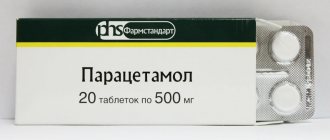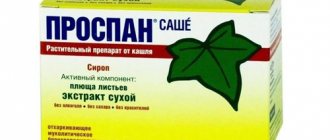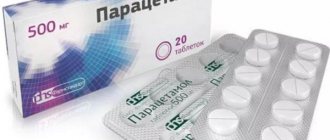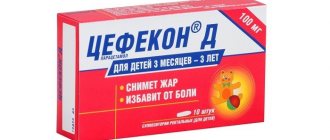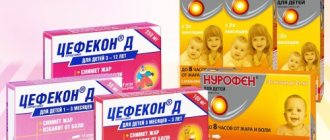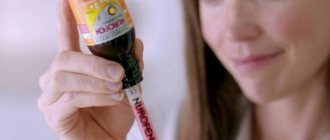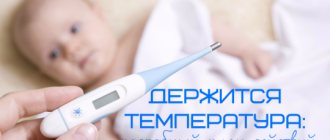"EFFERALGAN": composition
- The active ingredient – paracetamol – is a non-steroidal analgesic that has an antipyretic and analgesic effect on the child’s body;
- additional components
- macrogol 6000, which has a mild laxative effect,
- sucrose solution,
- sodium saccharin,
- sorbic acid,
- sodium methyl parahydroxybenzoate and propyl parahydroxybenzoate,
- flavoring with a combined taste of vanilla and caramel
- water.
In efferalgan syrup for children, the dosage of the main active ingredient is 0.03 g per milliliter of syrup. The drug has a transparent, homogeneous, viscous consistency. Produced by the French pharmaceutical company Bristol-Myers in dark plastic bottles of 30 milliliters each with a measuring spoon included.
Efferalgan solution for oral administration 30 mg/ml 90 ml bottle No. 1
Efferalgan International nonproprietary name Paracetamol Release form Oral solution Composition 1.0 ml of the drug contains the active substance: paracetamol 30 mg, excipients: macrogol-6000, sugar syrup, sodium saccharin E954, potassium sorbate, anhydrous citric acid, caramel-vanilla flavoring *, purified water. *composition: gamma-octalactone, gamma-hexalactone, diacetyl, acetylmethylcarbinol, isoammyl cinnamate, gamma-heptalactone, vanillin, propylene glycol, triacetin, caramel coloring. DESCRIPTION Slightly viscous solution of brown color with a caramel-vanilla odor. Pharmacotherapeutic group: Other analgesics-antipyretics. Anilides. ATX code: N02BE01
Pharmacological properties Pharmacokinetics Absorption of paracetamol when taken orally occurs quickly and completely. Peak plasma concentrations are achieved 30-60 minutes after administration. Paracetamol is quickly distributed in all tissues. Concentrations in blood, saliva and plasma are comparable. Plasma protein binding is weak. Paracetamol is predominantly metabolized in the liver and excreted in the urine. 90% of the dose taken is excreted by the kidneys within 24 hours, mainly in the form of glucuronide conjugates (60-80%), as well as sulfate conjugates (20-30%). Less than 5% is excreted unchanged. The half-life is 2 hours. A small part of paracetamol, with the participation of cytochrome P450, is converted into a metabolite that combines with glutathione and is excreted in the urine. In case of overdose, the amount of this metabolite increases. In case of severe renal failure (creatinine clearance below 10 ml/min), the elimination of paracetamol and its metabolites is slowed down. Pharmacodynamics Efferalgan contains paracetamol, which has an analgesic and antipyretic effect.
Indications for use: Symptomatic treatment of mild to moderate pain and/or febrile conditions.
Method of administration and dosage This dosage form is a solution, intended for children weighing from 4 to 32 kg (approximately 1 month - 12 years). The solution can be taken orally undiluted or diluted in a small amount of liquid (for example, water, milk, juice). In children, dosage should be observed in accordance with the child's body weight. Age and corresponding body weight are given approximately. The recommended daily dose of paracetamol is about 60 mg/kg/day. The average single dose depends on the child’s body weight and is 10-15 mg/kg body weight every 6 hours 4 times a day. For convenience and accuracy of dosing, it is necessary to use the graduated measuring spoon included with the drug. The measuring spoon has divisions indicating a single dose for a child with the corresponding body weight: 4, 6, 8, 10, 12, 14, 16 kg. Unmarked divisions correspond to intermediate body weight: 3, 5, 7, 9, 11, 13, 15 kg. The measuring spoon is filled according to the child’s body weight and the liquid level is adjusted by divisions. For a child weighing from 4 to 16 kg: fill the measuring spoon according to the division corresponding to the child's body weight, or use the division closest to the child's body weight. For example, if the child’s body weight is from 4 to 5 kg: fill the measuring spoon to the division corresponding to 4 kg. If necessary, the drug can be repeated after 6 hours. For a child weighing 16 to 32 kg: First fill the measuring spoon to the specified division, and then refill the measuring spoon to the division required to obtain the child's desired body weight. For example, if the child’s body weight is from 18 to 19 kg, first fill the measuring spoon to the 10 kg graduation, and then fill it a second time to the 8 kg graduation. If necessary, the drug can be repeated after 6 hours. Regular use avoids fluctuations in pain intensity or temperature levels. In children, a regular interval between doses should be observed day and night, preferably 6 hours. In case of severe renal failure (creatinine clearance below 10 ml/min), the interval between doses of the drug should be at least 8 hours. Duration of treatment: 3 days - as an antipyretic, 5 days - as an analgesic.
Side effects Possible diarrhea, abdominal pain, nausea, vomiting, allergic reactions (skin rash, itching, urticaria, Quincke's edema, anaphylactic shock), tenesmus, decrease or increase in prothrombin index, decrease in blood pressure (as a symptom of anaphylaxis). Rarely - anemia, thrombocytopenia, leukopenia, neutropenia. With long-term use in large doses, hepatotoxic and nephrotoxic effects are possible. If adverse reactions occur, stop taking the drug and consult a doctor.
Contraindications Do not use the drug if your child has: - hypersensitivity to paracetamol or other components of the drug; - severe dysfunction of the liver and kidneys; - blood diseases; - deficiency of the enzyme glucose-6-phosphate dehydrogenase; - age up to 1 month. With caution The drug should be taken with caution in case of impaired liver function, Gilbert's syndrome. Before taking the drug, you should consult your doctor.
Interactions with other medicinal products Oral anticoagulants When taking maximum doses of paracetamol (4 g/day) for at least 4 days, there is a risk of increased effect of the oral anticoagulant and an increased risk of bleeding. Therapy should be monitored using the INR (international normalized ratio) at regular intervals. If necessary, the dose of the oral anticoagulant should be adjusted during treatment with paracetamol and after discontinuation of paracetamol. Effect on laboratory test results At abnormally high concentrations, taking paracetamol may affect the results of blood glucose determinations through the glucose oxidase-peroxidase reaction. The use of paracetamol may affect the results of determining blood urea by a method that uses phosphotungstic acid. When Efferalgan is used together with barbiturates, tricyclic antidepressants, anticonvulsants (phenytoin), flumecinol, phenylbutazone, rifampicin and ethanol, the risk of hepatotoxicity increases significantly. Taken together with salicylates significantly increases the risk of nephrotoxicity. Salicylamide may prolong the half-life (TL) of paracetamol. When used simultaneously with chloramphenicol, the toxicity of the latter increases. Probenecid leads to an almost twofold decrease in the clearance of paracetamol due to suppression of binding to glucuronic acid.
Precautions To avoid the risk of overdose, before using the drug, you must check that other medications used together do not contain paracetamol. Maximum recommended doses: - in children weighing up to 37 kg, the total dose of paracetamol should not exceed 80 mg/kg/day; - in children weighing from 38 to 50 kg, the total dose of paracetamol should not exceed 3 g/day; - in adults and children weighing more than 50 kg, the total dose of paracetamol should not exceed 4 g/day.
Precautions When treating a child with paracetamol at a dose of 60 mg/kg/day, the concomitant use of another antipyretic drug is justified only if paracetamol is ineffective. Patients suffering from diabetes or following a low-carbohydrate diet should take into account the sugar contained in the drug when calculating their daily sugar intake: 0.67 g of sugar per dose of the drug per 4 kg of body weight, according to the graduation on the measuring spoon.
Pregnancy and lactation Paracetamol penetrates the placental barrier and is excreted in breast milk. When using paracetamol during pregnancy and lactation, the expected benefits of therapy for the mother and the potential risk for the fetus and child should be carefully weighed. Peculiarities of the drug's influence on the ability to drive a vehicle and potentially dangerous mechanisms. Does not affect.
Overdose Signs of acute poisoning with paracetamol are nausea, vomiting, anorexia, pain in the epigastric region, sweating, pale skin, appearing in the first 24 hours after administration. Taking paracetamol at a dose of 150 mg/kg body weight in children causes destruction of liver cells, leading to complete and irreversible hepatonecrosis, liver failure, metabolic acidosis, encephalopathy, which, in turn, can lead to coma and death. 12-48 hours after administration, an increase in the level of liver transaminases, lactate dehydrogenase and bilirubin may be observed with a simultaneous decrease in the level of prothrombin. The clinical picture of liver damage usually becomes apparent after one or two days and reaches a maximum after 3-4 days. If symptoms of overdose appear, it is recommended to stop taking the drug and immediate hospitalization. Blood samples should be taken for an initial determination of plasma paracetamol levels. Gastric lavage is carried out in case of oral administration of the drug, intake of enterosorbents (activated carbon, hydrolytic lignin), administration of the antidote N-acetylcysteine intravenously or orally within 10 hours after taking the drug. Acetylcysteine may be effective 16 hours after an overdose. Symptomatic treatment is also carried out.
Packaging 90 ml of solution for oral administration in a bottle made of polyethylene terephthalate, sealed with a lid with a child protection system made of low-density polyethylene. 1 bottle along with a polystyrene measuring spoon and instructions for medical use are placed in a cardboard box.
Storage conditions Store at a temperature not exceeding 25C. Keep out of the reach of children!
Shelf life: 3 years. Do not use after expiration date.
Dispensing conditions Without a prescription.
Manufacturer: Bristol-Myers Squibb, 304 Avenue du Doctor Jean Bru, 47000 Agen, France. Marketing authorization holder: 3 Bristol-Myers Squibb, rue Joseph Monnier, PO Box 325, 92506 Rueil-Malmaison Cedex, France.
How does it affect the body? (Pharmacodynamics)
The active substance of the drug is an analgesic with an antipyretic effect. At the same time, it relieves pain and reduces elevated temperature to normal values, reduces the amount of prostaglandins in the blood that are synthesized in the brain. At the same time, prostaglandins irritate the thermoregulation center, which is located in the hypothalamus. Paracetamol increases the susceptibility of pain receptors to bradykidin, histamine. When taken, the active substance of the syrup blocks the formation of prostaglandins, as a result of which the pain goes away and the temperature drops to normal. At the same time, the effect of indirect anticoagulants on the body increases and the effect of uricosuric drugs decreases.
Overdose and interaction with other medications
In case of an overdose of efferalgan, the following appears:
- pallor;
- nausea;
- vomit;
- stomach ache;
- excessive sweating.
If you experience symptoms of poisoning, you should immediately stop taking the medicine! The patient needs to immediately undergo gastric lavage and be admitted to the hospital under medical supervision!
If Efferalgan is taken during treatment with anticonvulsants, as well as antidepressants and barbiturates, this can negatively affect the baby’s liver, as well as affect the functions of the kidneys and urinary tract.
Indications for use:
The syrup is a symptomatic therapy drug, that is, it is taken once, as needed, and not in courses.
Recommended for use:
- pain of various etiologies: dental, headache, menstrual, after injuries and others;
- temperature rise above 38ºC.
You can also replace aspirin with the mixture if you are intolerant of the latter or have bronchial asthma.
Contraindications
- anemia;
- intolerance to the main substance or additional components included in the dosage form;
- severe insufficiency of liver or kidney function,
- age up to 1 month.
Any form of the drug should not be given to children under three months of age without consulting a doctor.
Side effects
If you exceed the maximum recommended dose, side effects may occur such as:
- nausea,
- vomiting,
- abdominal pain;
- allergic manifestations - from rash and skin itching to Quincke's edema,
When the recommended doses are exceeded for many days, in rare cases the following develops:
- toxic poisoning
- disruption of the hematopoietic system,
- renal and liver failure.
Indications and contraindications for Efferalgan
Efferalgan is indicated as a medication for children aged 1 month and older to relieve fever and pain. It is given to babies when they are teething, or if there are other reasons for pain.
The drug is not indicated for children:
- up to one month of life;
- with severe forms of liver or kidney failure;
- if the child has diabetes;
- if you are allergic to paracetamol or other substances in the medicine.
Rectal suppositories should not be used if there are inflammatory processes in the rectum or anal area.
Hilak forte for children. How to take it for a child, contraindications and side effects.
What to do when a newborn’s eyes fester - in this article →
What is the best way to stop a child's cough?
You should not take Efferalgan if you are simultaneously being treated with medications that contain paracetamol or other anti-inflammatory substances.
If indirect anticoagulants are used along with Efferalgan, treatment is carried out under the control of blood clotting!
EFFERALGAN syrup for children: instructions for use
Antipyretics should be taken in doses, based on the age and weight of the child. Changes in the permissible dose are made with the permission of the pediatrician.
The therapeutic dose for an adult weighing up to 80 kg is 0.5 g per dose. For heavier weights – 1 gram at a time. For children, 10–15 mg per kilogram of weight is recommended.
According to the instructions for use, Efferalgan syrup for children can be taken for no more than 3 days in a row. After the expiration of the period, if there is no result, you should contact your pediatrician.
How to take it correctly?
- Shake the bottle of syrup before opening.
- Pour the required amount of syrup into a measuring spoon, in accordance with the indicated dosage.
- The measurements on the measuring spoon are indicated by body weight.
- The syrup can be given in its pure form,
- After taking the mixture, you can wash it down with a couple of sips of water.
- For infants, the syrup can be diluted with 25-50 milliliters of water or milk.
- The minimum interval between two doses is 4 hours.
special instructions
To avoid exceeding the maximum daily dose, Efferalgan should not be used simultaneously with other drugs containing paracetamol.
When using the drug for more than 5-7 days, it is necessary to monitor the peripheral blood picture and the functional state of the liver.
Paracetamol distorts the results of laboratory tests of glucose and uric acid in blood plasma.
If it is necessary to prescribe the drug to patients with diabetes mellitus or to patients on a low-sugar diet, it should be taken into account that 1 ml of the drug contains 0.335 g of sugar (0.67 g of sugar for each calibration division of the measuring spoon /indicated by marks in kg/).
Persons caring for a sick child should be warned about the need to discontinue the drug and consult a doctor if adverse reactions occur. Consultation with a doctor is also required in the absence of a therapeutic effect: continuation of fever for more than 3 days and pain for more than 5 days.
"EFFERALGAN" - syrup for children: price
The cost of children's medicine is determined by the cost of the manufacturer, the markup of the pharmaceutical network and the cost of delivery to the region. As a result, the average price for Efferalgan syrup for children is about 90-100 rubles. For example:
- WER.RU – 93 rubles;
- Europharm – 99.90 rubles;
- Dialogue – 78 rubles;
- IFC Pharmacy – 104.50 rubles;
- Maksavit – 89 rubles;
- Pharmacy – 100 rubles.
The drug is dispensed without a doctor's prescription.
"EFFERALGAN": analogues
An alternative to the drug may be other drugs produced in the same dosage form, with the same active substance and the same indications for use. These include:
| Panadol is a children's suspension from the French pharmaceutical manufacturer Farmaclair. The composition and principle of action is similar to Efferalgan in syrup. Price – 89.50 rubles |
| Paracetamol is a Russian-made medicine produced in liquid form. helps in relieving mild and moderate pain of various etiologies, and also alleviates feverish conditions such as flu and colds. Price – 60 rubles |
| Ibuprofen-Akrikhin is a Polish medicine based on the active substance ibuprofen. Available in the form of a suspension in a dosage approved for children. Used as an analgesic and antipyretic. Price – 85.50 rubles. |
| Calpol is a drug produced by the German pharmaceutical company Aspen Bad Oldesloe in the form of a suspension. Has an analgesic and antipyretic effect. Used to relieve symptoms of infectious, inflammatory and viral diseases accompanied by pain and fever. Price – 80 rubles. |
When a drug is prescribed to children, its principle of action
Efferalgan is available in tablets, as well as in the form of suppositories and in liquid form (syrup or suspension). For children, the drug is prescribed to reduce pain and fever with:
- influenza inflammation;
- acute respiratory viral infections;
- neuralgia;
- childhood infectious diseases;
- toothache;
- pain syndrome due to injuries and burns;
- headaches and muscle pain.
The drug in liquid form is perfectly adsorbed in the stomach - the maximum concentration in the blood plasma occurs after half an hour or an hour.
If the medicine is administered in the form of rectal suppositories, its absorption into the blood occurs more gradually. The highest plasma concentration is achieved in this case after 2-3 hours.
As the drug passes through the liver, metabolism results in the formation of inactive substances, which are then excreted from the body in the urine. About 5 percent of the drug is eliminated in its original form after about 3-4 hours.
The antipyretic effect of the drug is due to its effect on the active points of thermoregulation in the hypothalamus. At the same time, the action of the cyclooxygenase enzyme is inhibited. As an analgesic, paracetamol contained in Efferalgan inhibits the production of prostaglandins in the central nervous system. As a result, the pain impulse is practically not carried out, and its production in the body gradually fades.
"EFFERALGAN" - children's syrup: reviews
"Efferalgan" is essentially ordinary paracetamol. I took it from the pharmacy for the child in the form of rectal suppositories. They should be placed at night, when my daughter has a slight fever. I have the feeling that this drug acts rather slowly compared to ibuprofen. When my daughter has a fever, I use both candles and syrup at the same time. We have no side effects from it, but I think that at this price you can find a more effective medicine
Good day. I have two children, but when I give Efferalgan at a high temperature, it affected each of them differently. He hardly helped his eldest son, and in the same condition, he lowered the temperature of his youngest daughter, and only in him did they find salvation. In general, Efferalgan is always available in our family medicine cabinet, despite its disadvantages. In general, the medicine is not without its shortcomings, but I can’t say anything bad about it either.

